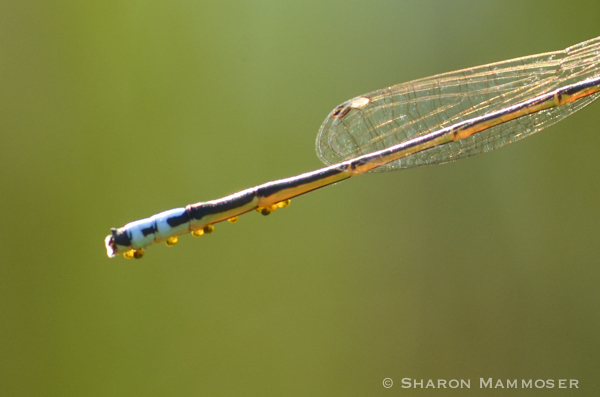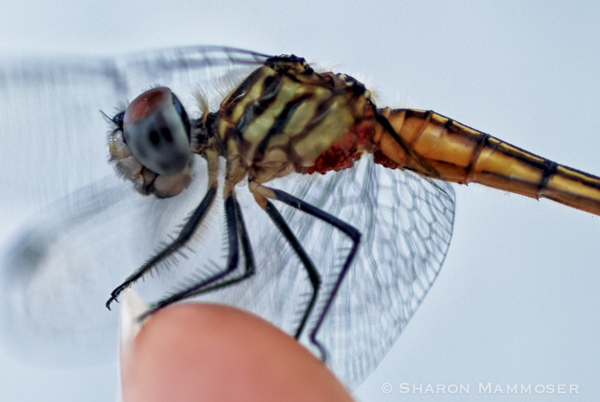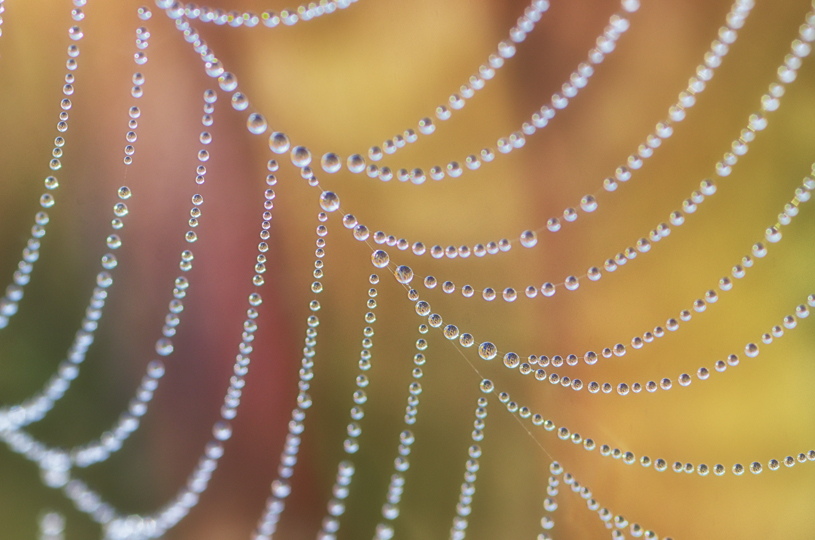
Did you have any idea what these tiny globs were on the damselfly’s body from last week’s puzzler?
When I first started noticing them I thought they were eggs that had somehow gotten stuck on the female’s body rather than left behind in the water. But after a little investigating, I learned that they are actually water mites–a tiny critter that rides around on the larger insect, feeding on the damselfly’s body fluid before falling off and going about its life.
Have I mentioned how many odd and awesome animals there are in the world?
There are 1500 species of Hydrachnida–water mites, in North America and over 5000 in the world. Many of these remain fairly unknown to scientists. Water mites are TINY, most only 2-3mm long! Most go unnoticed.
There are mites that live in the water, soil, in birds’ nests, in animals’ homes, on plants and animals–more than 50,000 different kinds! Many mites are specialists–that is they have one animal they parasitize– be it honey bees, dogs, cats, water boatman, damselflies or dragonflies, etc. There is a mite that lives in the tropics that is among the STRONGEST animal on earth, able to lift 1,182 times its weight! And you’ve probably heard of dust mites? Well these are just another kind of mite–these feed on the dead skin and hair shed by humans… yes, I know–gross!
…So back to the water mites.
They go through 4 stages–egg,larva,nymph and adult. In the immature stages they have only 6 legs but as adults they have 8. (Same is true for ticks, which are related to mites) Most are brightly colored to warn fish and other animals of their terrible taste. Check out the red mites on this dragonfly below.

Do the water mites harm the insect hosts? Usually not though if there are enough of them, they could make it hard for the insect to fly or may get in the way of reproduction. Mostly they just feed on the body fluids, ride around some and then drop off to become adults. Sound like fun? I can’t imagine how they know when to drop off–but if it’s over water, imagine the ride!
Check out the next puzzler.

